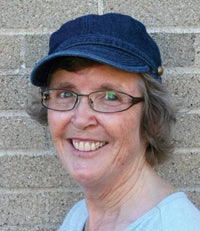Trip to Ireland reveals land with contrasts
Published 10:09 am Thursday, September 11, 2014
Creative Connections by Sara Aeikens
When our Irish tour guide for an Irish heritage and castle tour first said the Irish word “craic,” it sounded like “crack.” I smiled as he told our Freeborn-Mower Cooperative Services-sponsored bus group of about 40 people that it means “fun.” Exploring the perimeter of Ireland’s southern half with my husband, my sister from Oklahoma and her travel companion, my husband and I had fun as the dictionary defines it.
On our first evening in Ireland, as we were treated to a medieval meal and minstrel show at Knappogue Castle, the actors encouraged us to become part of the performance. Listening to Irish accents, even when difficult to understand, ended up enjoyable — or craic. Of course, being served the traditional drink of mead — honey and fermented apple juice — helped ease the jet lag from the long airplane trip.
Our guide shared his Irish heritage and history with a sense of humor as we started our bus tour near the edge of the Atlantic Ocean. Overlooking the immense heights of the Cliffs of Moher, we watched hundreds of cliff-diving seagulls. We explored nearby underground Irish boutique shops nestled as half-circle mounds covered with grass turf. Only the front window frames of the tiny stores peeked through to entice tourists.
Continuing our trip southward toward the Ring of Kerry, our large bus fit on a ferry for a ride across the wide Shannon River. We learned about Ireland’s history, including economic hardships and her many struggles with England.
Three other highlights stood out on this day. Being able to actually go inside one of the original transatlantic flying boats increased our understanding of transportation history and how technology connects us globally. Visiting an Irish national park gave us an opportunity to ride in a jaunting car, which is really a two-wheel horse-drawn cart that holds four people and the driver. Craic!
Going through an immigration museum helped us grasp the impact of the potato famine and the mass emigration it triggered. By chance, at the same museum, I located the name of author Elbert Hubbard, father of a friend of our family in my hometown of Minot, N.D. This pocket philosopher perished on the torpedoed Lusitania ocean liner that sank in 1915 not far from the Cobh Heritage Center that we visited.
One activity that others here at home often ask about is kissing the Blarney Stone. I had no plan of action for that item, but I climbed to the top of the castle’s ancient circular stone staircase where it formed part of the wall. Our guide told us if you kiss someone who kissed it, all involved will increase its joyous benefits. I changed my mind. Craic!
Several experiences I appreciated as an artist focused on glass and wool. We followed closely how each step in the process of heating, shaping, blowing, sizing, designing, carving and finishing produces commemorative crystal at the Waterford Crystal Factory. I selected a three-foot high glass harp for a souvenir, but upon discovering the $30,000 price tag, my family talked me out of it.
Traveling through miles of rocky, grass-covered hillsides emphasized how essential good soil is for the economy. Only landowners can own a firearm. Sheep seemed as popular as people in the countryside. A vivid paint stripe on each ovine behind identified its owner, much like American branding of livestock. While sheering sheep during a presentation, a sheep farmer indicated that wool is now about 10 times less valuable than half a decade ago. We also watched two sheep dogs demonstrate their keen sheep-herding abilities.
We browsed through the world’s oldest and largest active woolen mills and accompanying gift shops. After giving explicit information about how the Irish economy arrived at its low point and that we’d be aiding the upswing-in-progress, our guide encouraged us to spend freely. During a factory tour I found it interesting that the waterworks system established in the 1800s now needs to be replaced and everyone will be required to pay for a service previously provided free by the government.
A roadside walk through a stud farm gave us a pasture-fence view of the mares and colts, as a young man made a laugh-out-loud presentation of horse breeding details. Signs along the way indicated their stud fees and how many millions of euros famous resident racehorses have earned. We also enjoyed adjoining Japanese gardens, including a red, curved bridge over a lilypad-filled pond and brilliantly colored flowerbeds.
Staying overnight in a castle gave us a taste of luxurious Victorian lifestyle. At our delicious formal dinner, the main course arrived with flair, as four waiters attired in bowties and tails served our table of four by lifting the silver lids of our individual plates in unison — all accompanied by a harpist. Of course, the menu included lamb.
After daytime exploring in the Dublin harbor section near our hotel and walking through museums, we managed to attend an evening cathedral service. We then joined the late crowds for a pub visit to watch agile Irish dancers. In Killarney we even heard famous Irish singer Daniel O’Donnell, because of a few “no shows” to a sold-out concert.
We spent some time in the national cemetery that contains over a million-and-a-half graves. We listened to stories of both old and new Irish Republic supporters who gave their lives for their country. In reading headstones, I found Irish family names I recognized from Albert Lea.
For the living, Ireland is a land of contrasts and is an interesting, beautiful and enjoyable land to visit. Craic!
Sara Aeikens is an Albert Lea resident.


